In the broader context of racism in the United States, mass racial violence in the United States consists of ethnic conflicts and race riots, along with such events as:

The civil rights movement was a nonviolent social movement and campaign from 1954 to 1968 in the United States to abolish legalized racial segregation, discrimination, and disenfranchisement in the country. The movement had its origins in the Reconstruction era during the late 19th century and had its modern roots in the 1940s, although the movement made its largest legislative gains in the 1960s after years of direct actions and grassroots protests. The social movement's major nonviolent resistance and civil disobedience campaigns eventually secured new protections in federal law for the civil rights of all Americans.

St. Clair County is the ninth most populous county in Illinois. Located directly east of St. Louis, the county is part of the Metro East region of the Greater St. Louis metropolitan area in southern Illinois. As of the 2020 United States census, St. Clair County had a population of 257,400, making it the third most populous county in Illinois outside the Chicago metropolitan area. Belleville is the county’s seat and largest city.

East St. Louis is a city in St. Clair County, Illinois. It is directly across the Mississippi River from downtown St. Louis, Missouri, and the Gateway Arch National Park. East St. Louis is in the Metro-East region of Southern Illinois. Once a bustling industrial center, like many cities in the Rust Belt, East St. Louis was severely affected by the loss of jobs due to the flight of the population to the suburbs during the riots of the late 1960s. In 1950, East St. Louis was the fourth-largest city in Illinois when its population peaked at 82,366. As of the 2020 census, the city had a population of 18,469, less than one-quarter of the 1950 census and a decline of almost one third since 2010.
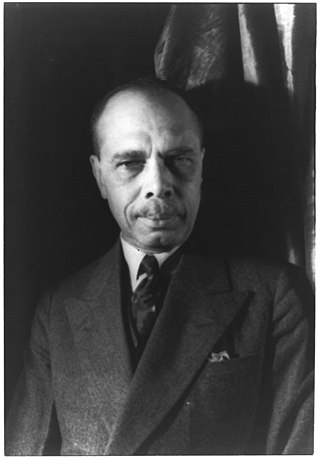
James Weldon Johnson was an American writer and civil rights activist. He was married to civil rights activist Grace Nail Johnson. Johnson was a leader of the National Association for the Advancement of Colored People (NAACP), where he started working in 1917. In 1920, he was chosen as executive secretary of the organization, effectively the operating officer. He served in that position from 1920 to 1930. Johnson established his reputation as a writer, and was known during the Harlem Renaissance for his poems, novel and anthologies collecting both poems and spirituals of black culture. He wrote the lyrics for "Lift Every Voice and Sing", which later became known as the Negro National Anthem, the music being written by his younger brother, composer J. Rosamond Johnson.
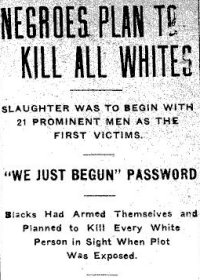
The Elaine massacre occurred on September 30–October 2, 1919 at Hoop Spur in the vicinity of Elaine in rural Phillips County, Arkansas. As many as several hundred African Americans and five white men were killed. Estimates of deaths made in the immediate aftermath of the Elaine Massacre by eyewitnesses range from 50 to "more than a hundred". Walter Francis White, an NAACP attorney who visited Elaine shortly after the incident, stated "... twenty-five Negroes killed, although some place the Negro fatalities as high as one hundred". More recent estimates in the 21st century of the number of black people killed during this violence are higher than estimates provided by the eyewitnesses, and have ranged into the hundreds. The white mobs were aided by federal troops and local terrorist organizations. Gov. Brough led a contingent of 583 US soldiers from Camp Pike, with a 12-gun machine gun battalion.

Red Summer was a period in mid-1919 during which white supremacist terrorism and racial riots occurred in more than three dozen cities across the United States, and in one rural county in Arkansas. The term "Red Summer" was coined by civil rights activist and author James Weldon Johnson, who had been employed as a field secretary by the National Association for the Advancement of Colored People (NAACP) since 1916. In 1919, he organized peaceful protests against the racial violence.
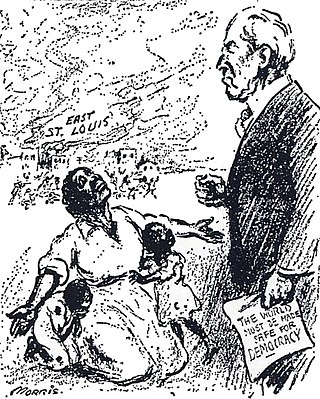
The East St. Louis massacre was a series of violent attacks on African Americans by white Americans in East St. Louis, Illinois between late May and early July of 1917. These attacks also displaced 6,000 African Americans and led to the destruction of approximately $400,000 worth of property. They occurred in East St. Louis, an industrial city on the east bank of the Mississippi River, directly opposite the city of St. Louis, Missouri. The July 1917 episode in particular was marked by white-led violence throughout the city. The multi-day rioting has been described as the "worst case of labor-related violence in 20th-century American history", and among the worst racial riots in U.S. history.

The Dyer Anti-Lynching Bill (1918) was first introduced in the 65th United States Congress by Representative Leonidas C. Dyer, a Republican from St. Louis, Missouri, in the United States House of Representatives as H.R. 11279 in order “to protect citizens of the United States against lynching in default of protection by the States.” It was intended to establish lynching as a federal crime. The Dyer Anti-Lynching Bill was re-introduced in subsequent sessions of United States Congress and passed, 230 to 119, by the House of Representatives on January 26, 1922, but its passage was halted in the United States Senate by a filibuster by Southern Democrats, who formed a powerful block. Southern Democrats justified their opposition to the bill by arguing that lynchings were a response to rapes and proclaiming that lynchings were an issue that should be left for states to deal with.

Leonidas Carstarphen Dyer was an American politician, reformer, civil rights activist, and military officer. A Republican, he served eleven terms in the U.S. Congress as a U.S. Representative from Missouri from 1911 to 1933. In 1898, enrolling in the U.S. Army as a private, Dyer served notably in the Spanish–American War; and was promoted to colonel at the war's end.
African Americans in Omaha, Nebraska are central to the development and growth of the 43rd largest city in the United States. Black people are first recorded arriving in the area that became the city when York came through in 1804 with the Lewis and Clark expedition and the residence of Jean Baptiste Point du Sable who lived at Fort Lisa for an extended period in 1810. There were also enslaved Black people at the Church of Latter Day Saints Winter Quarters in 1846. The first free Black settler in the city arrived in 1854, the year the city was incorporated.
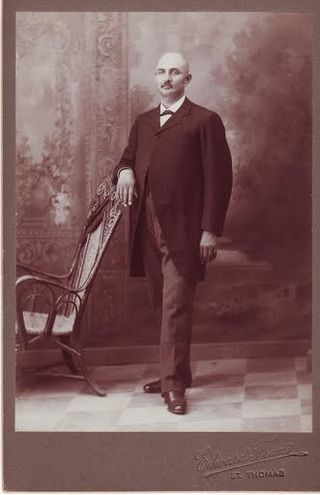
Christopher Harrison Payne was a prominent religious, educational, and political leader of the late nineteenth and early twentieth centuries. Born in the American South during the time of slavery, Payne rose to a level of prominence achieved by few, regardless of race. One of his many accomplishments include being the first African American elected to the West Virginia Legislature.

The National Association for the Advancement of Colored People (NAACP) is a civil rights organization in the United States, formed in 1909 as an interracial endeavor to advance justice for African Americans by a group including W. E. B. Du Bois, Mary White Ovington, Moorfield Storey, and Ida B. Wells. Over the years, leaders of the organization have included Thurgood Marshall and Roy Wilkins.
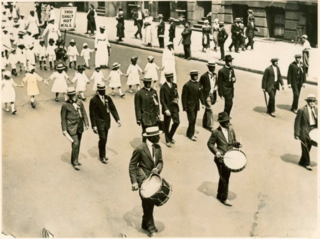
The anti-lynching movement was an organized political movement in the United States that aimed to eradicate the practice of lynching. Lynching was used as a tool to repress African Americans. The anti-lynching movement reached its height between the 1890s and 1930s. The first recorded lynching in the United States was in 1835 in St. Louis, when an accused killer of a deputy sheriff was captured while being taken to jail. The black man named Macintosh was chained to a tree and burned to death. The movement was composed mainly of African Americans who tried to persuade politicians to put an end to the practice, but after the failure of this strategy, they pushed for anti-lynching legislation. African-American women helped in the formation of the movement, and a large part of the movement was composed of women's organizations.
The Reverend Dr. Charles Douglas (C.D.) Martin was a West Indian Moravian minister. He was born in St. Kitts, British West Indies to parents Joseph and Adriana Martin. He founded the Fourth Moravian Church in Harlem, New York in 1903. It was located at 124 West 136th Street, Manhattan. He called the church "Beth-Tphillah" which is Hebrew for House of Prayer. In 1912, he was ordained as the first and only Black minister of the Moravian Church in the United States. He presided over the church from July 1908 until his death in March 1942.
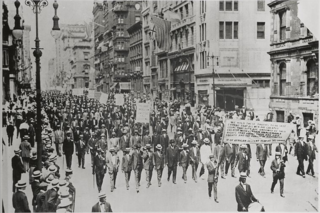
The Reverend Dr. Hutchens Chew (H.C.) Bishop was an Episcopal priest who spent most of his career in New York City. He was rector of St. Philip's Episcopal Church in Harlem for 47 years. The church is the oldest black Episcopal parish in New York. The church was founded by abolitionists who laid the first stone in 1819.
John R. Shillady (1875-1943) was an Irish-American political activist who was Executive Secretary of the National Association for the Advancement of Colored People (NAACP) from 1918 to 1920. He was attacked and badly beaten by a mob in Austin, Texas, on August 22, 1919. The attack occurred in broad daylight in downtown Austin, and the perpetrators bragged publicly about it. Shillady's injuries left long-lasting physical and emotional effects.

After young African-American men volunteered to fight against the Central Powers, during World War I, many of them returned home but instead of being rewarded for their military service, they were subjected to discrimination, racism and lynchings by the citizens and the government. Labor shortages in essential industries caused a massive migration of southern African-Americans to northern cities leading to a wide-spread emergency of segregation in the north and the regeneration of the Ku Klux Klan. For many African-American veterans, as well as the majority of the African-Americans in the United States, the times which followed the war were fraught with challenges similar to those they faced overseas. Discrimination and segregation were at the forefront of everyday life, but most prevalent in schools, public revenues, and housing. Although members of different races who had fought in World War I believed that military service was a price which was worth paying in exchange for equal citizenship, this was not the case for African-Americans. The decades which followed World War I included blatant acts of racism and nationally recognized events which conveyed American society's portrayal of African-Americans as 2nd class citizens. Although the United States had just won The Great War in 1918, the national fight for equal rights was just beginning.














